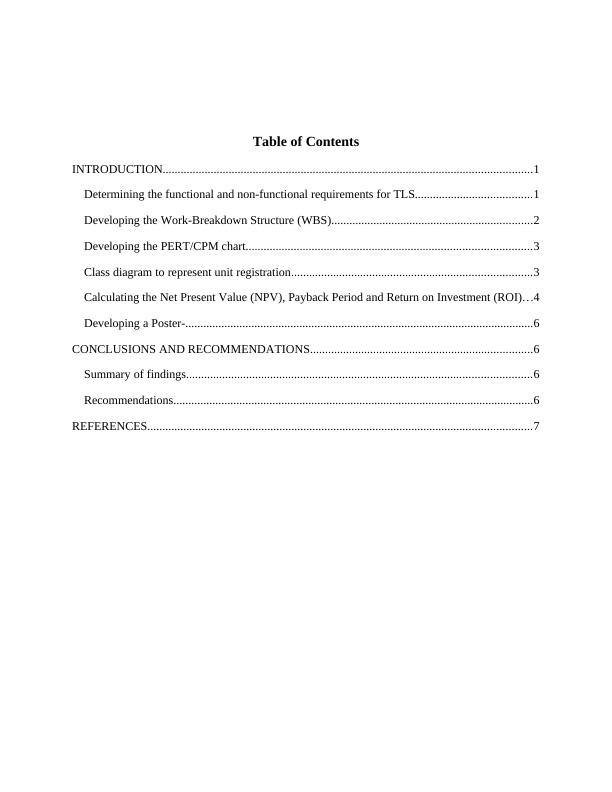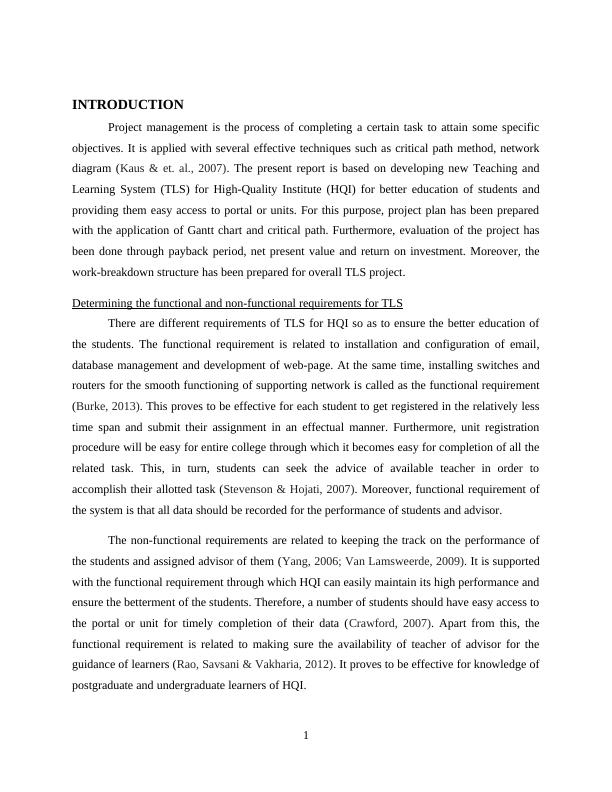System Analysis and Design
15 Pages2870 Words33 Views
Added on 2020-03-16
About This Document
System Analysis and Design INTRODUCTION 1 Determining the functional and non-functional requirements for TLS 1 Developing the Work-Breakdown Structure (WBS) 2 Developing the PERT/CPM chart 3 Class diagram to represent unit registration 3 Calculating the Net Present Value (NPV), Payback Period and Return on Investment (ROI) 4 Developing a Poster- 6 CONCLUSIONS AND RECOMMENDATIONS 6 Summary of findings 6 Recommendations 6 REFERENCES 7 List of figures Figure 1: Gantt chart 5 Figure
System Analysis and Design
Added on 2020-03-16
ShareRelated Documents
End of preview
Want to access all the pages? Upload your documents or become a member.
SYSTEM ANALYSIS AND DESIGN 1 SYSTEM ANALYSIS AND DESIGN 1
|16
|2247
|270
High Quality Institute (HQI) Case Study
|10
|1743
|32
High Quality Institute (HQI) Case Study Report
|10
|1690
|57
Teaching and Learning System (TLS) Analysis Report
|16
|1941
|114
SMB4201 Systems Analysis and Design : Assignment
|13
|2122
|81
Systems Analysis and Design
|17
|2883
|27




